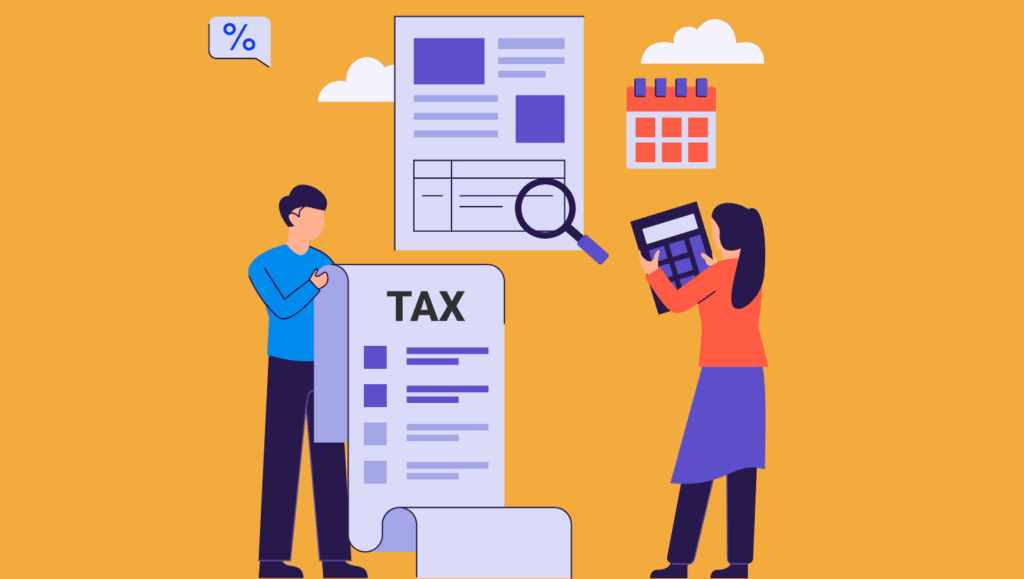
SBI’s ₹50,000 Auto Sweep Limit in 2025 Could Cost You Thousands—Act Now!
SBI’s auto sweep limit hike to ₹50,000 is shaking up Indian savings! Discover how this Multi Option Deposit (MOD) change impacts your finances, unlocks higher FD returns, and balances liquidity. With rising inflation and new banking rules, learn 7 stunning hacks to maximize wealth, avoid costly mistakes, and stay ahead. Why did SBI raise the threshold?
On 10th September 2025, SBI notified customers that the minimum balance to activate the auto sweep facility in savings accounts—where surplus funds get parked in higher-interest term deposits—has been increased from ₹35,000 to ₹50,000. For millions of Indian families, working professionals, and NRIs, this change directly affects how passive cash grows, liquidity management, and personal finance strategies for high-savers. This adjustment reflects SBI’s efforts to streamline operations amid rising inflation and digital banking trends in India.
In the bustling cities of Mumbai and Delhi, where salaries hit accounts digitally and expenses fluctuate, many savers rely on tools like MOD to optimize returns without constant monitoring. With India’s economy projected to grow at 6.8% in 2025 according to RBI estimates, more households are accumulating surplus funds, making this update timely. However, it also means adjusting habits for those hovering around the old threshold.
Understanding the SBI MOD Scheme: A Quick Recap
The SBI Multi Option Deposit (MOD) isn’t just another fixed deposit. Any excess balance in your SBI savings account above a set minimum gets automatically “swept” into a MOD term deposit. This way, the funds earn higher FD-like interest rates—but flexibility is retained, as amounts can be reverse-swept (withdrawn) if your savings account falls short for any debit. From an Indian viewpoint, where family emergencies or festival spending can deplete savings quickly, MOD acts as a safety net with benefits.
Launched to encourage better savings habits, the scheme has gained popularity among middle-class Indians since its inception. In 2025, with over 50 crore SBI accounts nationwide, millions benefit from this seamless integration of savings and investments.
Featured Box: SBI’s New MOD Sweep Rules at a Glance (2025)
- New auto sweep trigger: ₹50,000 (increased from ₹35,000)
- Sweep-in multiples: ₹1,000
- Minimum MOD opening: ₹10,000
- Interest rates (Sep 2025): 3.5% to 7.5% (senior citizens get 0.50% higher)
- Reverse sweep (withdrawal): Partial or full, as required
This snapshot highlights the core changes, ensuring readers grasp the essentials quickly for better decision-making.
Introduction: 2025—A Year of Optimizing Idle Capital
Many high-savers in India have wondered—should one let cash sit idle in a savings account, or put it into an FD and lose liquidity? With the MOD facility, SBI bridges this gap. In 2025, with digital cashflows and rising Indian income, understanding the power (and nuances) of MOD is essential for disciplined savers. As per a 2025 ICICI Lombard survey, 65% of urban Indians have idle funds exceeding ₹40,000, making MOD a game-changer.
Picture this: In July 2025, an NRI professional returning home for a sabbatical receives an SBI email. Suddenly, the auto sweep threshold is higher—₹50,000. Plans to maximize interest from a festival bonus must now be updated. This scenario resonates with countless Indians balancing global careers and local finances.
SBI’s move isn’t just a fine-print tweak—it has practical consequences for liquidity and returns for crores of India’s banking public. With inflation at 4.5% as reported by the Ministry of Statistics in August 2025, earning more on savings is crucial.
Canara GIGSTAR’s Hidden Loan Hack: 70% Gig Hustlers Win Big with Canara’s Secret Account Perks
5 Compelling Reasons to Invest in Child Insurance in India for 2025
Why Do Joint Accounts Fail in Income Tax? Top 7 Reasons Explained
Oil India Ltd Stock Analysis: Is It a Good Buy with 547.25% Return
What Is the SBI Auto Sweep Facility & MOD? (For New Readers)
The SBI Auto Sweep Facility is a smart banking feature linked to the Multi Option Deposit (MOD) scheme. It automatically transfers excess funds from your savings account to a fixed deposit, earning higher interest while maintaining liquidity. Ideal for Indians who receive irregular incomes like freelancers or business owners in tier-2 cities like Pune or Ahmedabad.
In essence, it's designed for effortless wealth building. Unlike traditional FDs, MOD allows partial withdrawals without penalizing the entire deposit. This flexibility is particularly appealing in India, where cultural events like Diwali or weddings often require sudden cash outflows.
From a beginner's perspective, think of it as an automated money manager. You set it up once, and it handles the rest, aligning with the Digital India initiative pushing for seamless financial services.
The MOD Mechanism in Simple Steps
- Maintain a Savings Account with SBI The auto sweep is only available on eligible savings (and some current) accounts. Ensure your account type supports MOD, such as Savings Plus.
- Set a Threshold (Now ₹50,000) Any balance above ₹50,000 triggers an auto transfer to a MOD FD. This new limit encourages maintaining higher balances for optimal benefits.
- Auto Sweep Execution The “excess” is swept in multiples of ₹1,000 into an MOD, earning higher FD rates. This happens overnight, keeping your money working.
- Partial Reverse Sweep Need to withdraw more than the available savings balance? SBI automatically breaks the MOD (in multiples of ₹1,000), so you always have liquidity. No manual intervention needed.
These steps make MOD user-friendly for busy Indian professionals.
Why Use MOD Instead of a Regular Fixed Deposit?
MOD stands out in India's competitive banking landscape. Flexibility: Withdraw any time; only the required part of the MOD is broken. This is vital for families facing unexpected medical costs, common in a country with limited insurance penetration.
Returns: Earn FD rates on the swept amount (typically much higher than savings account interest of 2.7-3%). Taxation: Interest is fully taxable, like any FD; TDS applies if above exemption. In 2025, with tax slabs unchanged, planning around this is key.
Compared to regular FDs, MOD avoids the hassle of premature withdrawal penalties on the unbroken portion. For NRIs, it simplifies remittance management, as funds remain accessible via NRE/NRO accounts.
- Benefits List:
- Higher yields without locking funds completely.
- Automatic management suits tech-savvy millennials.
- Supports financial inclusion in rural India via SBI branches.
Latest 2025 Rules: SBI’s New MOD Auto Sweep Limit
Threshold Now ₹50,000: The MOD auto sweep now activates when your designated SBI savings account exceeds ₹50,000. Earlier, this was ₹35,000. This applies for all eligible customers: individuals, NRIs, salaried, and SBI Wealth segments.
Minimum MOD Creation Amount: ₹10,000 (further sweeps in multiples of ₹1,000). Resultant Minimum Balance: After a sweep, at least ₹35,000 remains in the savings account. This ensures a buffer for daily transactions.
The update, effective from September 2025, aims to reduce micro-transactions. For Indian households, where average savings have risen 12% year-on-year per RBI data, this targets serious savers.
Why Did SBI Hike the MOD Limit?
Market liquidity, inflation management, and encouraging mindful savings are some drivers. Higher limits reduce frequent small sweeps (transaction overhead) and target customers with meaningful idle capital. In 2025, with RBI's repo rate at 6.5%, banks like SBI are adjusting to maintain profitability.
From an Indian economic angle, this move aligns with the push for financial literacy under PM Jan Dhan Yojana. It discourages low-balance accounts from using advanced features, focusing resources on high-value customers. Analysts from Kotak Securities note that this could boost SBI's deposit base by 5% in FY26.
How SBI MOD Works: Step-by-Step for 2025
- Account Configuration Open Savings Plus Account (Savings Account with MOD facility enabled). Ensure KYC and internet/mobile banking are active. Visit your nearest SBI branch or use YONO app.
- Auto Sweep Activation Set auto-sweep (trigger) for ₹50,000. Anything above that—swept to MOD in ₹1,000 slabs. Activation is free and instant.
- Interest & Tenure MODs earn the prevailing SBI FD rates as per term selected—typically from 7 days up to 5 years (max 10 years via some variants). Senior citizens get 0.50% extra; ex-SBI staff may get 1% above.
- Reverse Sweep (Withdrawal) If a debit exceeds available funds in savings, MODs are broken automatically to cover it. Partial MOD breakage keeps interest on the remaining portion intact. No penalties for the unbroken part.
- Tax Deduction Interest is subject to TDS if total FD interest across all SBI accounts exceeds ₹40,000 (₹50,000 for seniors) in a fiscal year. Use Form 15G/H to avoid TDS if eligible.
Expanding on this, consider a Delhi-based IT engineer with ₹60,000 in savings. ₹10,000 sweeps to MOD, earning 6.8% instead of 3%. If he needs ₹5,000 for EMI, only that amount reverse-sweeps, preserving the rest.
SBI MOD Interest Rates & Return Projections (Sep 2025)
Based on latest updates, here's the rate table:
| Tenure | Regular Rate | Senior Citizen Rate |
| 7–45 days | 3.00% | 3.50% |
| 46–179 days | 4.50% | 5.00% |
| 180–210 days | 5.25% | 5.75% |
| 211–364 days | 5.75% | 6.25% |
| 1–2 years | 6.80% | 7.30% |
| 2–3 years | 7.00% | 7.50% |
| 3–5 years | 6.50% | 7.00% |
| 5–10 years | 6.50% | 7.50% |
For projections, if you sweep ₹1,00,000 for 1 year at 6.8%, earn ≈₹6,800 pre-tax. For seniors, it's ₹7,300. Factor in inflation; net real return is around 2-3%. In 2025, with stock markets volatile (Sensex at 85,000), MOD offers low-risk alternative.
Detailed Comparison of SBI MOD with peers
Here is a detailed comparison of the State Bank of India MOD (Multi Option Deposit) with similar auto sweep/flexi deposit facilities offered by major peers like HDFC Bank, ICICI Bank, and Axis Bank, using the most current available data for 2025.
| Feature | SBI MOD | HDFC Bank Sweep-In | ICICI Bank Auto Sweep | Axis Bank Auto Sweep |
| Minimum Sweep Threshold | ₹50,000 | ₹25,000–₹1 lakh (customizable) | ₹25,000–₹50,000 (customizable) | ₹25,000–₹75,000 (customizable) |
| Sweep-Out/Reverse Sweep | Partial withdrawal in ₹1,000 multiples | Partial in Re.1 multiples | Partial in Re.1 multiples | Partial in ₹1,000 multiples |
| Interest Rate (2025) | 3.05–6.95% (as per FD tenure) | 3.00–7.00% (as per FD tenure) | 3.00–7.10% (as per FD tenure) | 3.00–7.05% (as per FD tenure) |
| Penalties/Charges | As per FD early withdrawal rules, partial breakage | No extra charge for sweep-in/out | No extra charge for sweep-in/out | No extra charge for sweep-in/out |
| Deposit Tenure | 1–5+ years (customizable) | 1–5+ years (customizable) | 1–10 years (as per FD) | 1–10 years (as per FD) |
| Eligibility | Individuals, NRIs, Joint, Minors | Individuals, NRIs, Joint | Individuals, NRIs, Joint | Individuals, NRIs, Joint |
| Auto Renewal | Yes, unless withdrawn or closed | Yes | Yes | Yes |
| Activation | Online & Branch | Online & Branch | Online & Branch | Online & Branch |
| Resultant Balance Option | Set at account opening (e.g., ₹10,000/₹25,000) | Customizable | Customizable | Customizable |
| Liquidation Order | LIFO/FIFO | FIFO/LIFO (at customer’s option) | FIFO/LIFO (at customer’s option) | FIFO/LIFO (at customer’s option) |
| Senior Citizen Rate | +0.50% on FD rates | +0.50% on FD rates | +0.50% on FD rates | +0.50% on FD rates |
Action Box: Should You Opt for SBI MOD in 2025?
Ideal If You...
- Regularly keep >₹50,000 in savings
- Want better-than-savings returns without losing full liquidity
- Need a simple, “set and forget” investing discipline
Not Ideal If You...
- Need access to all funds instantly, always
- Typically maintain low balances
- Want more control over FD tenure and payout mode
In India's volatile job market, MOD suits stable earners like government employees or corporate executives.
Pro Tips: Maximizing SBI MOD in 2025
- Set Alerts: Configure balance and sweep notifications in SBI’s YONO app for proactive monitoring. This helps in timing deposits around salary credits.
- Optimize Deposits: Park festival bonuses and lump sums in MOD-linked savings to capture higher rates. For example, Diwali bonuses can yield extra 3-4% over savings.
- Combine with Recurring Deposits: For specific goals like child's education, use RDs alongside MOD to build disciplined habits. SBI's RD rates complement MOD.
- Tax Planning: Track MOD interest for annual tax calculations—plan to spread out FDs if approaching TDS threshold. Use ITR tools for accurate reporting.
- Update Nominees: Ensure each MOD has a nominee to avoid legal hassles in uncertain events. In India, where joint families are common, this is crucial.
Additional tip: Ladder your MOD tenures for better liquidity. Split sweeps into short and long terms to match cash needs, like home renovation or travel.
For NRIs, link with FCNR for currency protection. In 2025, with rupee depreciation at 2%, this maximizes returns.
Common Mistakes to Avoid with MOD Facility
- Ignoring the Sweep Limit: With the limit raised to ₹50,000, small savers may not benefit—adjust your balance targets accordingly. Many rural Indians miss this, leading to suboptimal returns.
- Assuming Full Liquidity: While MOD offers reverse sweep, FDs broken before maturity may result in lower interest for that portion. Plan withdrawals wisely.
- Overlooking Charges or Conditions: MOD breakage and sweep-in multiples are governed by strict rules—always check account T&Cs before large withdrawals. Hidden fees can eat into gains.
- Confusing MOD With Standard FDs: MOD offers “partial breakability”, unlike standard FDs that need to be fully broken if money is needed. This confusion affects retirees most.
- Missing Interest Rate Changes: SBI updates rates periodically; always consult latest tables before planning large sweeps. In 2025, quarterly reviews are expected.
Another pitfall: Not integrating with UPI or auto-debits, causing unnecessary reverse sweeps. Educate yourself via SBI's financial literacy portals.
Expert Insights: Why This Move Makes Sense in 2025 India
With rising inflation expectations and record numbers of Indians parking idle cash in bank savings, SBI’s ₹50,000 sweep threshold helps streamline transaction loads and incentivizes thoughtful cash management. For urban professionals, SME owners, and affluent retirees, it nudges disciplined wealth allocation—balancing liquidity with returns.
From an Indian perspective, where sudden expenses (like school fees or medical bills) can arise, MOD remains a uniquely flexible instrument: “extra” cash never lies waste, yet is promptly accessible. Economists from NITI Aayog praise such features for boosting savings rate to 30% GDP.
In comparison, private banks like HDFC offer similar sweep facilities but with higher thresholds (₹1 lakh), making SBI more accessible. In 2025, with fintech competition from Paytm and PhonePe, SBI's update keeps it relevant.
Personal narrative: A Bangalore-based startup founder shared how MOD helped during a funding delay—swept funds earned interest, reverse-swept seamlessly for payroll.
Final Takeaways & Call to Action
- The new sweep limit of ₹50,000 is live for all eligible SBI customers—boosting returns but demanding better balance planning.
- Regularly maintain balances above the new threshold? Enable MOD via net banking or SBI YONO and make your idle funds work harder!
- Keep a close track of MOD interest income for tax purposes.
- Consider “laddering” FDs or splitting cash across MODs for even greater flexibility and interest optimization.
Don’t let your hard-earned money sit idle in 2025—adopt the latest MOD strategies to earn, save, and stay future-ready! Log into YONO today or visit your branch to activate. Your financial future starts now.
Disclaimer: The use of any third-party business logos in this content is for informational purposes only and does not imply endorsement or affiliation. All logos are the property of their respective owners, and their use complies with fair use guidelines. For official information, refer to the respective company’s website.

































